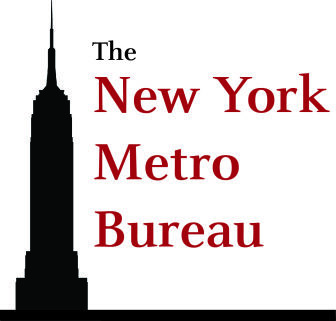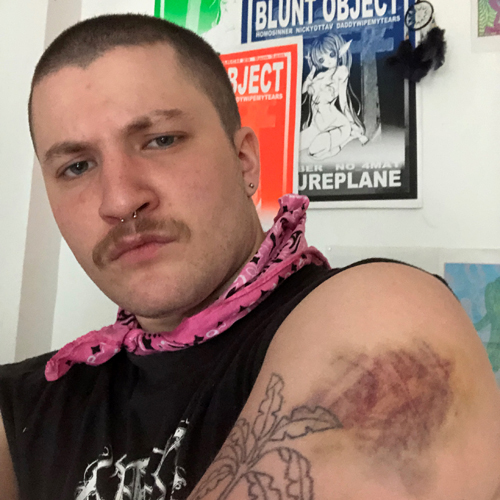![]() Watch video below.
Watch video below.
NEW YORK — Activists in New York are challenging NYPD Police Commissioner Dermot Shea’s account of a May 30 incident where police in Brooklyn rammed two patrol cruisers into a crowd of protestors and metal barricades, sending demonstrators flying.
At a hearing held by New York State Attorney General Latisha James on Monday, Shea defended officers by claiming the conduct did not violate the department's use of force policy.
Shea claims that the officers had no choice but to drive through the crowd of demonstrators, suggesting that the crowd had deliberately surrounded the NYPD squad cars.
 “Preliminarily we have an account of the situation where officers are being pinned in by protestors; think that’s plainly evident if you review the facts.” Shea testified. “It’s on the heels of several other incidents where that same tactic was used, also caught on video and available for anyone to see, where people are pinning in police vehicles and pelting it with a number of items.”
“Preliminarily we have an account of the situation where officers are being pinned in by protestors; think that’s plainly evident if you review the facts.” Shea testified. “It’s on the heels of several other incidents where that same tactic was used, also caught on video and available for anyone to see, where people are pinning in police vehicles and pelting it with a number of items.”
Officers, however, appear to have had a number of tactical options beyond ramming their car into the protestors.
In previous days of protests, police used side streets to avoid engaging protestors, and were able to quickly circumvent the crowds of several thousand protestors without incident.
Devin Khan, 22, who was knocked several feet after being struck by one of the cruisers, says the event was not isolated, and was part of broader tensions that day between police and protestors.
“The police cars had been speeding down the street way before the video was taken,” Khan said. “They had actually already struck a couple people already. One lady had her bike completely smashed.”
Khan, who suffered injuries to his legs and neck after being struck, believes that how the officers used the car does constitute a misuse of force, designed to intimidate protestors.

“That car did not drive to nudge people, it drove to hurt people,” Khan said.
Other protestors who were also present for the incident shared a similar picture, suggesting the officers in the cruisers had options beyond driving forward into the crowd.
Brandon Jean, 23, who narrowly missed being struck by one of the cruisers, says officers became scared when they realized they had driven into the crowd, and they did not know how to respond.
“They had plenty of space to back up, but it became kind of obvious that they had no idea what they were doing,” Jean said, adding that “[the incident] was shocking and not at all necessary. They have ways of getting around these protestors, like taking different streets, and they didn’t do that.”
Jean rejected Shea’s claim that officers were in danger, citing the use of riot gear by police, and that, according to him, demonstrators were primarily armed with water bottles and trash.
“I don’t think that’s any excuse for them to hurt protestors who were just marching in the street,” Jean said.
The incident in Brooklyn would not be the last time either Jean or Khan experienced NYPD officers exhibiting what they believed to be a misuse of force.
Three nights after the incident in Brooklyn, on June 2, Khan recorded a video of NYPD officers in Manhattan beating and dragging protestors near Union Square.
The video opens to a hellish scene with protestors being beaten with batons, and at one point multiple officers can be seen kneeling on the back of one demonstrator as they restrain them.
Neither Khan nor Jean could pinpoint exactly why the situation became so intense, though they blamed police tactics, particularly the now-controversial tactic of “kettling,” or corralling protestors and dividing them into smaller groups.
Protestors say the tactic adds to the anxiety they already feel, and often creates potentially unsafe situations where friends can be lost in the chaos without ways of communicating.
“They do this technique where they barricade you, they’d barricade you in the front and a group of them will be behind you closing in on you. Being put in that situation is kind of fight or flight,” Jean said. “It’s honestly terrifying because you don’t know what to do.”
NYPD did not respond to comment when shown the video.
In his remarks, Shea said the kettling practice is not an official NYPD policy, but acknowledged that because protests are fluid and quick to change, decisions like whether to divert groups into smaller, more manageable units, often depends on the individual protest.
Shea’s testimony yesterday also appears to echo sentiments shared by Mayor Bill de Blasio who defended officers at a press conference on the evening of the incident in Brooklyn.
“I wish the police officers hadn’t done that, but I also understand that they didn’t start the situation. The situation was started by a group of protesters converging on a police vehicle attacking that vehicle. It’s unacceptable. So the police officers have to get out of that situation.”
(Editor’s note: Devin Khan is the brother of JJIE’s New York Bureau Chief Daryl Khan, who participated in the editing of this story.)
